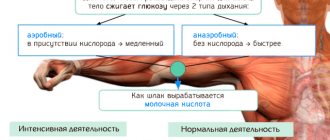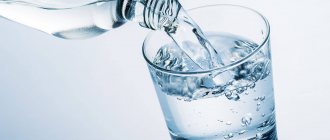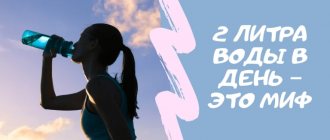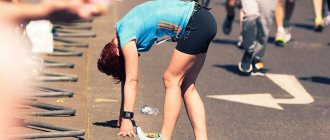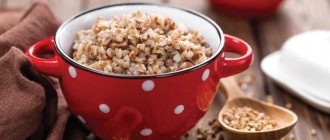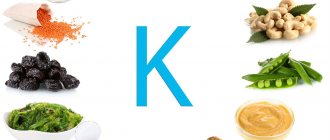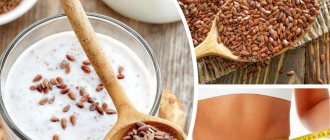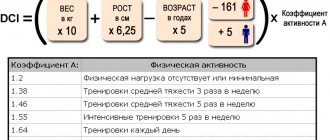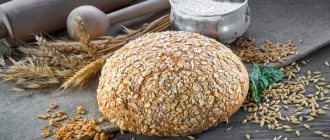Questions about removing excess fluid from the body and getting rid of excess weight are not complicated, and can be resolved with the help of a specialist. Swelling and excess weight are unpleasant, not to mention their appearance. Having gotten rid of excess water, you may suddenly realize that the reason is not excess weight.
Like 26
92396
How to remove excess water from the body, why does it accumulate in the body. Swelling is a sign that not everything is going well in the body. Edema is divided into two types: cardiac and renal. Kidney or heart disease is not necessarily accompanied by pain. Edema may not always be associated with these organs. In women, swelling depends on the menstrual cycle. The body of some women literally “pours” before the onset of menstrual periods.
What to do to remove excess water from the body. The first is to analyze your diet and possible lifestyle-related causes that lead to fluid retention in the body.
- 570
More details - 218
More details
- 540
More details
- 216
More details
If it's a lack of water
Pay attention to the drinks you drink instead of water. Perhaps this is tea, coffee, sweet drinks (cola, tarragon) and even packaged juices; they do not supply the body with the daily requirement of water. The body needs clean water, and not its semblance. These drinks already consist of different substances and do not dissolve toxins in the body to remove them.
Watch how often you drink diuretics. These include tea, coffee, sweet carbonated water, alcoholic drinks (beer, including). They do not add water to the body, but dry it out. The body is forced to stock up on life-saving moisture and use it at such moments. Therefore, swelling appears.
If you consume more salt than normal, fluid accumulates in the body to dissolve it. If you dined on herring and are thirsty, it is not because “fish love water,” but because excess salt enters the body, which it tries to remove through water. Constant consumption of salt forces the body to stock up on water in order to protect itself from the harmful effects of salt.
What to do if fluid is retained in the body?
There are many reasons why fluid stagnation occurs. These include:
- insufficient activity of movements;
- heat;
- prolonged stay in one position;
- use of medications, especially hormonal drugs;
- consumption of foods that retain water;
- insomnia, stress;
- alcohol abuse;
- limited drinking regime;
- pregnancy.
BADLY! Most often, when a person discovers edema, he limits fluid intake, which should not be done. Because to remove toxins from the body, you need a lot of water.
FINE! To prevent stagnation, it is better to give up foods that retain water and start the body’s drainage system.
Reduce your own salt intake
If you notice that this applies to your problem, gradually get used to less salty foods. Salt distorts the taste of the dish, giving artificial brightness and completely changing! Monosodium glutamate obscures any taste, subsequently causing addiction, like a drug. If the product is a little stale or poorly prepared, you should season it with glutamate and eat it with “enjoyment.” The salt-free diet is designed to solve the body's problems and helps to discover many refined tastes. The result will be slender legs without swelling and beautiful young skin.
Products to exclude from the menu
A nutritionist can tell you how to remove water from the body for weight loss. Products that affect fluid retention in the body usually contain large amounts of sodium.
The best known source is sodium chloride or table salt. This compound can be found in almost any food item from celery to seafood. In most cases, its natural amount is safe, but when cooking, cooks often oversaturate dishes with it. As a result, the norm increases by 2-3 times, forcing the body to fight the consequences.
Sodium is highest in processed foods, such as:
- sausage products;
- hard cheeses;
- canned meat and fish;
- fast food;
- sauces (mayonnaise, ketchup, soy sauce);
- marinades (olives, capers);
- canned vegetables;
- snacks (chips, crackers).
In addition to table salt, they often contain additional forms of sodium that enhance the taste, appearance and preservation of products: monosodium glutamate, sodium nitrite, sodium benzoate and sodium bicarbonate.
Another group responsible for fluid retention in the body is foods with a high glycemic index.
These include the sweets so beloved by many:
- cornflakes;
- baking;
- waffles,
- dried fruits;
- cookie;
- cakes and pastries.
You should also avoid drinking drinks such as soda or non-alcoholic beer. Alcohol in this case is generally contraindicated. Despite its diuretic properties, it disrupts the water-salt balance and becomes a source of toxins, the removal of which requires a large amount of water accumulated in tissue cells.
Coffee and strong tea in large quantities also have the opposite diuretic effect.
Leg Raise
To make swelling disappear, a simple exercise will help. Take a lying position on your back, lift your arms and legs up. Maintain this position for two minutes. After this, create tremors in your arms and legs, starting gradually and reaching maximum speed. Vibration tones the blood vessels, removes stagnant blood from them, and improves blood circulation. You can simplify the exercise: raise your legs on the wall and lie in this position for a while. Well, for those who are just bored lying there, diversify this time for yourself by doing a workout for your legs and face.
Herbal tinctures and decoctions to remove excess fluid
Herbal decoctions and tinctures were often used by our great-grandmothers to combat excess fluid in the body.
Such folk remedies are:
- chamomile;
- Avran officinalis;
- birch leaves;
- bearberry;
- St. John's wort;
- viburnum;
- sage;
- cowberry.
The medicinal avran is an indispensable remedy with unique diuretic properties. Avran should not be consumed in large dosages as it is poisonous. 1 tbsp. pour a spoonful of dry herb into a glass of boiling water and let it brew for 2-3 hours. Take the tincture 2-3 times a day. Preferably before meals.
Consumption of viburnum is not only a good prevention of hypertension and cardiovascular pathologies, but also a way to “drive away” excess fluid. 2 tbsp. spoons of fresh berries are ground and steamed with 1 cup of boiling water. After infusion, a spoonful of honey is added to the drink. Take tincture 2-3 tbsp. spoons after meals.
Chamomile is a real “universal” among medicinal plants. It is recommended for both adults and children. It can be used even by allergy sufferers. For overhydration, 2 tbsp. spoons of chamomile flowers are poured into 500 ml of water and brought to a “quiet” boil in a water bath. Drink 0.5 cups of decoction 2-3 times a day before meals.
You won’t be able to lose weight quickly in one day at home using decoctions and tinctures, but it’s completely safe to get rid of excess water in the body.
Application of fasting days
To remove excess water from the body, fasting days are recommended. Unloading can be done on anything, but experts say that the greatest effect is obtained from fasting days on tea with milk. Heat two liters of milk without bringing it to a boil, add green tea leaves, leave for half an hour and the drink is ready to drink. Every time you feel hungry, drink this drink.
Fasting day on kefir: buy a liter of fresh one percent kefir and drink a little every two hours.
Fasting day with pumpkin juice. If desired, mix two types of juices: pumpkin and apple, carrot, or another to make the juice taste more pleasant. But only pumpkin juice will remove excess liquid. There is no limit on how much you can drink pumpkin juice during the day. Packaged juice will not work in this case because it contains a lot of sugar.
Fasting days are limited in food, but not in clean water. No matter what the fasting day is, no matter what we consume, drink more clean water. Oatmeal cooked with water and without sugar will help get rid of swelling. It has been noticed that no matter how much excess water there is in the body, it all comes out without a trace. Flavor it with fruits, dried apricots, raisins, apples or spices. For example, cinnamon, which increases metabolism.
Causes of water retention in the body
Water accumulation occurs for various reasons. A person can change hormonal levels, this can be influenced by environmental elements. Excess water may be a consequence of past illnesses. For example, excess fluid appears due to the action of pathogenic bacteria or chronic diseases. Hoping that the swelling will go away on its own and drink less for the sake of it is not a way out of the situation. It is necessary to find out the cause, and for this you need a diagnosis made by a specialist.
The reason for water retention in the body can also be insufficient use. For example, a person, seeing swelling, decides to remove it in the most convenient way - drink less, but the swelling does not disappear. The reason is that the body is able to regulate urine output on its own and if there is not enough water in the body to remove waste, it begins to accumulate it until the required amount is collected. Many people mistakenly believe that if water remains in the body, the best way to get rid of it is to drink a diuretic.
Important: Constant use of diuretics leads to edema.
Excess salt can also retain water in the intercellular space. A healthy person should consume up to 15 g of salt per day, but the dose can be increased if he is actively involved in sports or in the summer, when salts leave the body through sweat. Therefore, an active person can lose up to 50 g of salt per day. But to remove excess, you need to drink more water, which will dilute the salt and restore electrolyte balance.
Why does fluid remain in the body? Drinking at night is one of the reasons. If you go to bed at ten, your last drink should be no later than 20:00. Drinks consumed later will cause additional kidney stress. This may result in you going to the toilet at night and waking up with a swollen face in the morning. It is best to drink actively before 19:00.
So one of the reasons for water retention in the body is a passive lifestyle. The fluid in the intercellular space is concentrated in the lymphatic vessels due to the contraction of the muscle tissue that surrounds them. Accordingly, it becomes difficult for the body to remove water.
Taking a bath with salt and soda
A soda-salt bath is a simple procedure, although it does not quickly give the desired effect. Such a bath gives rest, relaxes, and rids the body of excess water. It is advisable not to eat or drink 2 hours before taking a bath. We fill the bathtub with water, at a temperature no higher than 38 degrees, up to the armpits and dissolve half a kilogram of rock table salt and 200 grams of soda in it. Spend no more than 10 minutes in the bath. While in the bath, drink a cup of unsweetened hot green tea. When leaving the bath, lightly absorb the flowing moisture with a towel and lie down under the blanket to sweat for 40 minutes. After finishing the procedure, take a shower. No food or drink is allowed for the next hour. Those who had a similar experience claim that in the morning they observed a weight loss of half a kilogram.
What removes excess water from the body?
The kidneys are the main filter that removes excess water from the body. Up to 1,700 liters of blood per day pass through them. If the kidneys do not do their job well, swelling appears. Chronic renal failure occurs due to impaired water metabolism when the kidneys are unable to perform their function.
It is considered normal for a healthy person if 70% of 2 liters of water drunk is excreted in urine. It is not difficult to make such measurements yourself. However, do not take into account the part that comes out through the sweat glands. If less urine comes out, then there is some problem. If it is more, it means that there was an accumulation of fluid in the body before. Drinking tea, juices, soups, fruits, vegetables, which also consist of water, can be added to 2 liters of liquid.
A simple formula for calculating water for your weight.
Weekly diet
The given diet for ridding the body of water is strict, and can only be used after consultation with a doctor. If there are contraindications, the problem may become more complicated. The diet is designed for weight loss up to three kilograms. First, do an enema, and then drink one and a half liters of fresh kefir, supplementing this diet with some foods. The first day boiled potatoes (five pieces) are added to kefir. On the second day, kefir is combined with eating chicken breast, cooked without salt. On the third day, add 100 grams of lean meat boiled without salt to kefir. On the fourth day, eat 100 grams of boiled fish and the same kefir. Fifth day: kefir with any vegetables. Sixth day: exclusively kefir. Seventh day: drink kefir and still mineral water. After spending a week on the specified diet, it is recommended to eat according to the scheme proposed above.
General recommendations and methods for removing fluid from the body
How to remove water from the body for weight loss at home and what needs to be done for this - these are the questions that patients with this problem often ask.
There are a number of simple measures:
- Identifying the causes of overhydration.
- Normalization of diet and organization of balanced nutrition.
- Increasing physical activity, organizing sports activities.
- Rejection of bad habits.
- Regular fasting days.
Having determined the cause of water retention, you can choose the appropriate treatment method.
Depending on the source of overhydration, therapy can be gentle or more effective. There are drug treatments and folk recipes with natural ingredients.
With a small degree of overhydration, experts recommend starting with safer folk remedies that do not hit the body as hard, such as, for example, Furosemide.
Plants against edema
There are a sufficient number of plants with anti-edema properties. Mint, lemon balm, rose hips, lingonberries, bearberry, cumin, arnica inflorescences, as well as dried apple peels and birch leaves are suitable remedies. Brew tea from them and drink. Kidney tea is known to be gentle and does not cause unwanted side effects. Brew anti-edema plants and consume in their natural form. Herbs include: sorrel, nettle, parsley, celery. Among vegetables, cucumbers, zucchini, beets, horseradish, cabbage, potatoes, pumpkin, and eggplant will give the desired effect. Fruits against edema - apples, apricots, strawberries and wild strawberries. Dried fruits also help: prunes, raisins, dried apricots. You just need to gradually supplement your diet with them.
Milk milk diet
Another diet option is losing weight with milk tea. This product not only quenches thirst remarkably, but also dulls the feeling of hunger due to the interaction of milk fat and tannin contained in black and green tea.
The drink is prepared as follows:
- pour 1 liter of milk (low-fat) into a thick-bottomed pan, which is brought to a boil;
- the milk is slightly cooled, after which dry tea leaves (3-4 teaspoons) are added to it;
- Cover the pan with a lid and infuse the drink for 30-40 minutes.
For greater effect and improved taste, you can add a whisper of ginger or cinnamon.
It is necessary to understand that milk tea will not replace regular drinking water, so those losing weight need to drink an additional 1-1.5 liters of water per day. Along with the drink in limited quantities, the diet includes: oatmeal with water, raw vegetables, boiled chicken fillet, vegetable soups without salt.
Vitamins
A lack of vitamins, amino acids and microelements can also lead to fluid retention in the body. It is imperative to include the following foods in your diet:
containing vitamin B6: salmon, red meat, tuna, bananas, brown rice. This vitamin also helps normalize digestive processes; containing vitamins B1, B5 and D: low-fat dairy products and fresh fruits. These products also have a beneficial effect on the state of the nervous system, bone tissue and metabolic processes; trace elements calcium, manganese, potassium, magnesium. They are found in large quantities in greens, spinach, melons and citrus fruits. In addition, these products actively fight viral infections and help improve immunity.
In order for the body to fully get rid of excess fluid, toxins, waste and other products of processing and vital activity of the body, it is necessary to maintain a drinking regime.
You need to drink clean, high-quality water. Juices, compotes, teas, fruit drinks and other liquids that we often try to replace water with will not bring any benefit. If the liquid contains sugar, honey, minerals and other natural ingredients, it is already food. And water should enter the human body in its pure form. Some nutritionists recommend using structured water as a water resource. This is water that has undergone a cold purification process - freezing.
What you need to do to get rid of excess fluid in the body:
drink clean water in the amount of 1.5-2 liters per day. Soon your body will understand that it has enough water and will stop storing it in its tissues for future use. The swelling will go away. Eliminate salt as much as possible. As you know, salt retains water in the body. It also masks the real taste of the product. If you gradually get used to less salty foods, you may notice and discover a completely new taste of familiar foods. But completely unsalted food is not always good either. After all, table salt is the main source of sodium for the human body. Walking in the fresh air and dosed physical activity will help speed up metabolic processes. This will also lead to the removal of excess fluid from the body. Proper diet. Make it a rule to start the day with breakfast, which must include oatmeal, cooked in water without salt or sugar. Add dried fruits, cinnamon, turmeric to it. If you really can’t bear it and want something sweet, a spoonful of honey will replace sugar and serve as a source of glucose. You can vary your breakfast and replace oatmeal with other cereals - buckwheat, brown rice, corn. Corn is almost the only grain that contains gold elements that can be absorbed by the human body. Be sure to eat fresh vegetables, fruits and wholemeal bread every day. This is a source of “correct” carbohydrates, which will not only help remove excess water from the body, but also provide it with the necessary energy for the whole day. Low-fat fermented milk products, lean meats, fish and legumes are the most correct and healthy source of proteins, without which the normal functioning of the body is simply impossible. Replace sugar, baked goods and synthetic sweets with natural ones - dried fruits, nuts, honey and dark chocolate in small quantities.
The human body is 75% fluid, but too much of it can cause big problems. Edema itself can occur for various reasons. One of them is a warning about impending troubles or a predisposition to some kind of disease.
You just need to learn to understand your body language. It sends us signals that we often ignore for a reason. Morning swelling is a reason to think about your health. And of course, take action.
| Products that retain fluid in the body |
We recommend studying: Beauty and Health Health
Most people are familiar with the problem of edema and excess fluid in the body. Often, when we go to the mirror in the morning, we notice that our face seems to be swollen or “blurred.” In the arms and legs, swelling is also detected visually, and by other signs: shoes are too tight, and the straps of summer shoes cut into the skin; In winter, it can be difficult to zip up boots.
If you feel “heaviness in your legs”, but the swelling is not noticeable in appearance, you can press your finger in the area of the shin: a trace remains - there is swelling.
Photo: products that retain liquid
Lymphatic drainage massage
Initially, lymphatic drainage massage served as an auxiliary postoperative therapy. But over time, it has proven its effectiveness in the fight against edema and the removal of excess fluid from the body. The main techniques of this type of tactile influence are stroking and rubbing. The direction of movement is from the periphery to the cardiac muscle.
During the massage the following happens:
- the speed of lymph movement through the vessels increases;
- the process of formation of new lymphatic fluid is accelerated;
- the removal of excess water from tissue cells is activated.
However, like any medical procedure, lymphatic drainage massage has its contraindications:
- presence of thrombosis;
- thrombophlebitis;
- foci of inflammation on the skin;
- active stage of herpes;
- burns, wounds and other damage to the dermis;
- oncology;
- pregnancy.

